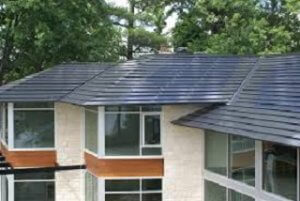From Guest Blogger Kara Masterson: Five Tips for a More Environmentally Friendly Home

Switch your light bulbs
It is a good idea to turn the lights off when leaving a room. But, you can save even more by replacing your light bulbs. Energy-efficient LED lights and compact fluorescent lamps last 20 times longer than the traditional incandescent bulbs, and they consume 70 percent less energy. Although they cost slightly more, using them will save you a significant amount of money.
Low-flow Plumbing Fixtures
There are various low-flow fixtures you can add to your home that will use less water and reduce your water bill costs. These features include toilets, faucets, and shower heads. Your toilet uses about 25 percent of the water in your home. The current toilets standard is 1.6 gallons per flush (GPF). The traditional toilets consume about 3.4 GPF, which is a lot of water, and if you were upgrading an old home, you would notice the significant difference in water consumption. Installing a high-efficiency toilet will save you as much as 3,000 gallons of water a year.
Change your Cleaning Products
Many cleaning commodities contain harmful chemicals that can be hazardous to you and your environment. When searching for cleaning products, look for those that have been labeled as eco-friendly. However, if you want to save even more on the cleaning products, you can opt to make your own products. Affordable ingredients such as vinegar, soap, lemon juice and baking soda can produce very efficient cleaners. Such cleaning products are cheaper to make and safer for you and your environment.
Proper Waste Disposal, Composting, and Recycling
Most cities collect and process recyclable waste material. But, you can’t compost and recycle unless you make it easy. Ensure you have recycling and trash bins in every room in your house. Most recyclable material is thrown away from bathrooms and home offices because the recycling bin is situated too far away. Lots of programs offer free containers, and many waste management services provide lessons on composting and recycling for free. Others, like Peterson’s Service Corp and similar businesses, will accept any disposable material and ensure that it gets taken care of properly.
Most of the trash produced in homes is made up of foodstuffs. If you dump it, it won’t benefit you in any way. However, if you have a compost bin at home, you can convert it to fertilizer for your garden.
Use Energy-Efficient Appliances
Old appliances use up more energy than necessary. But, new energy-efficient models significantly reduce your energy consumption and carbon footprint. If you only have to replace one device, then replace your old refrigerator. Your fridge runs 24/7 and consumes a constant amount of electricity, and this adds a huge amount on your power bill. But, using an energy-efficient refrigerator saves you up to 15 percent of the total energy costs.
Making your home greener helps conserve your environment and also saves you lots of money on utility bills. So, switch to energy-efficient LED and compact fluorescent light bulbs, install low-flow plumbing fixtures, ensure proper waste disposal, and use energy-efficient appliances, and you will notice significant savings on your energy costs.
